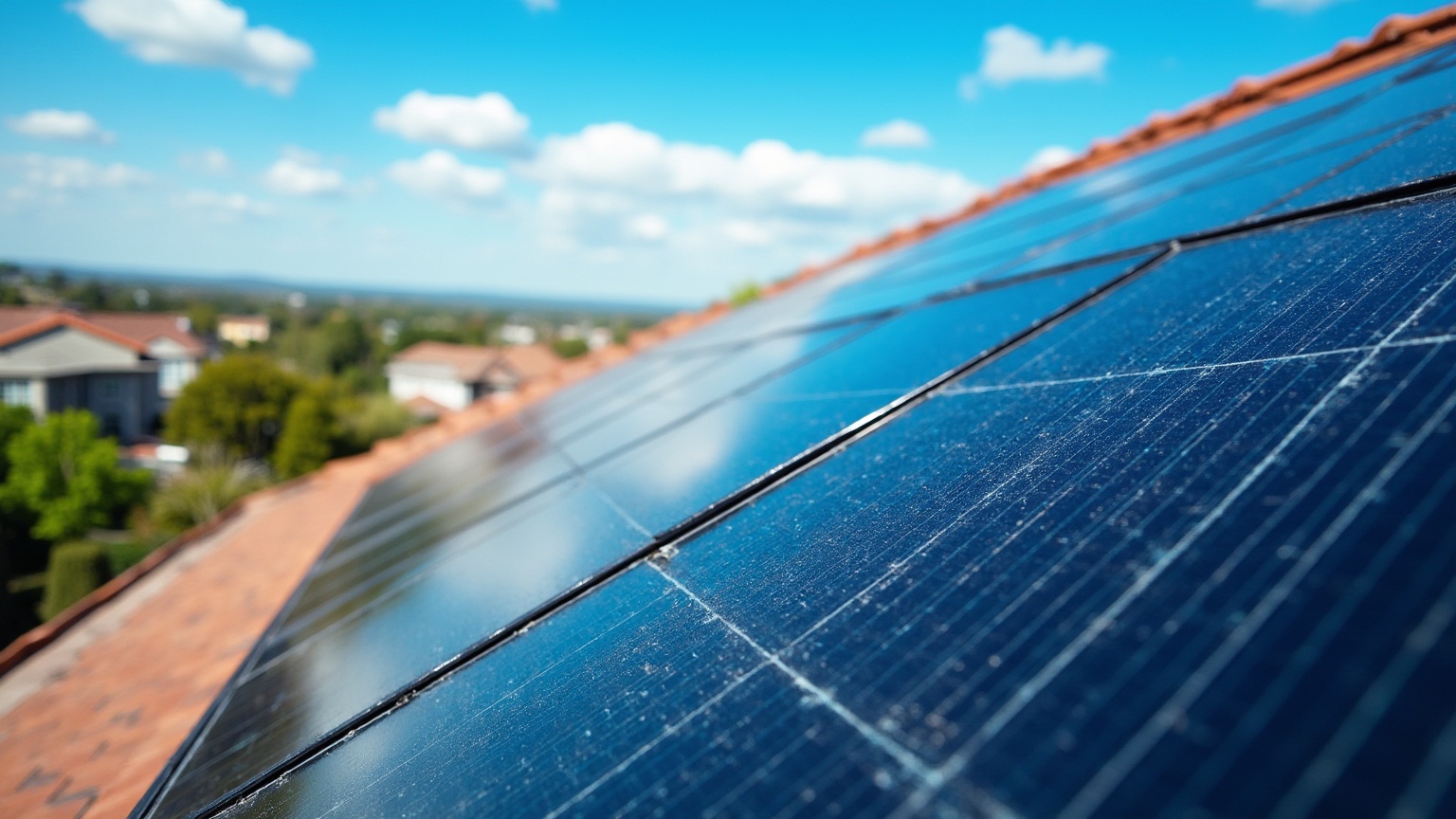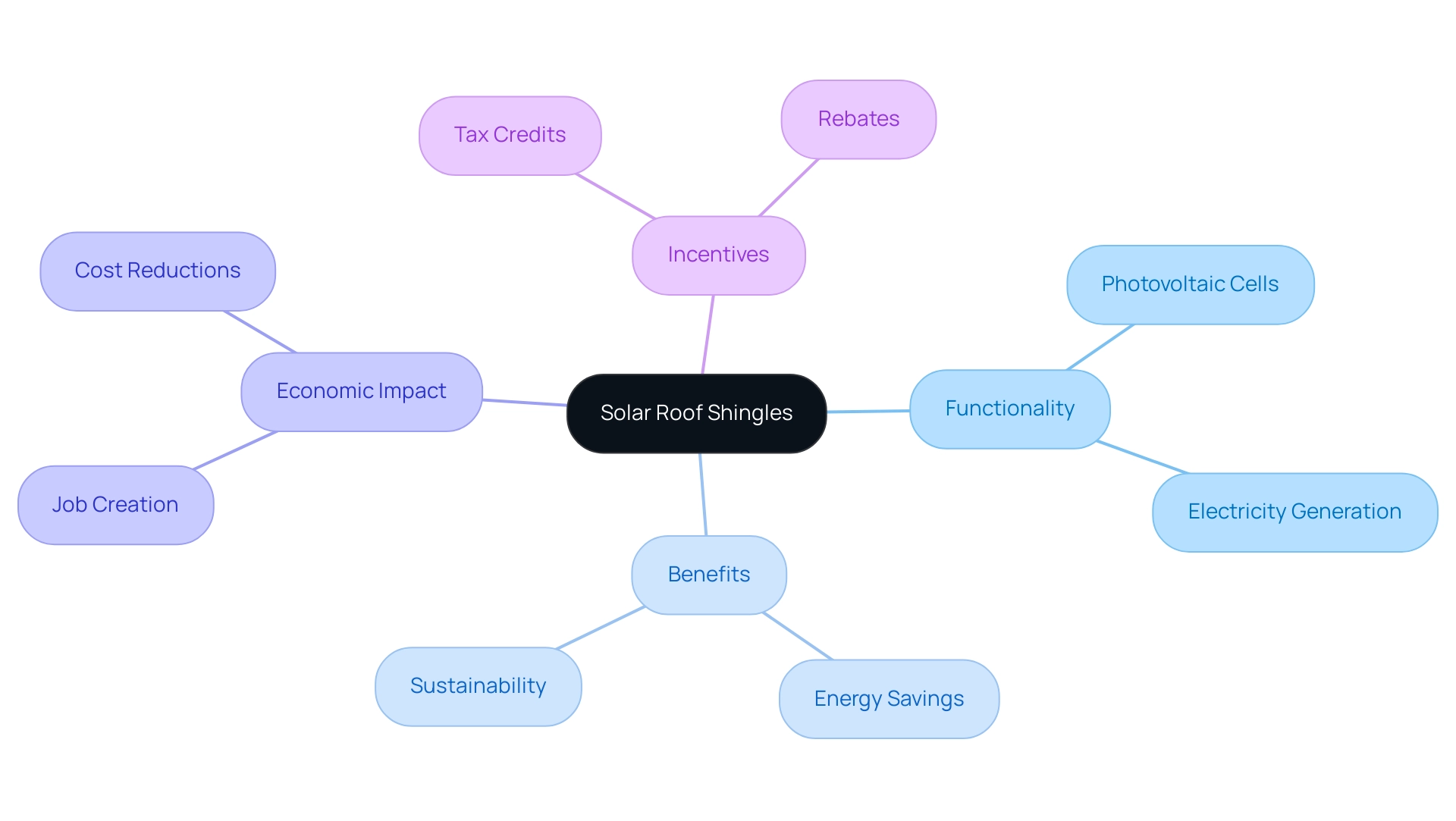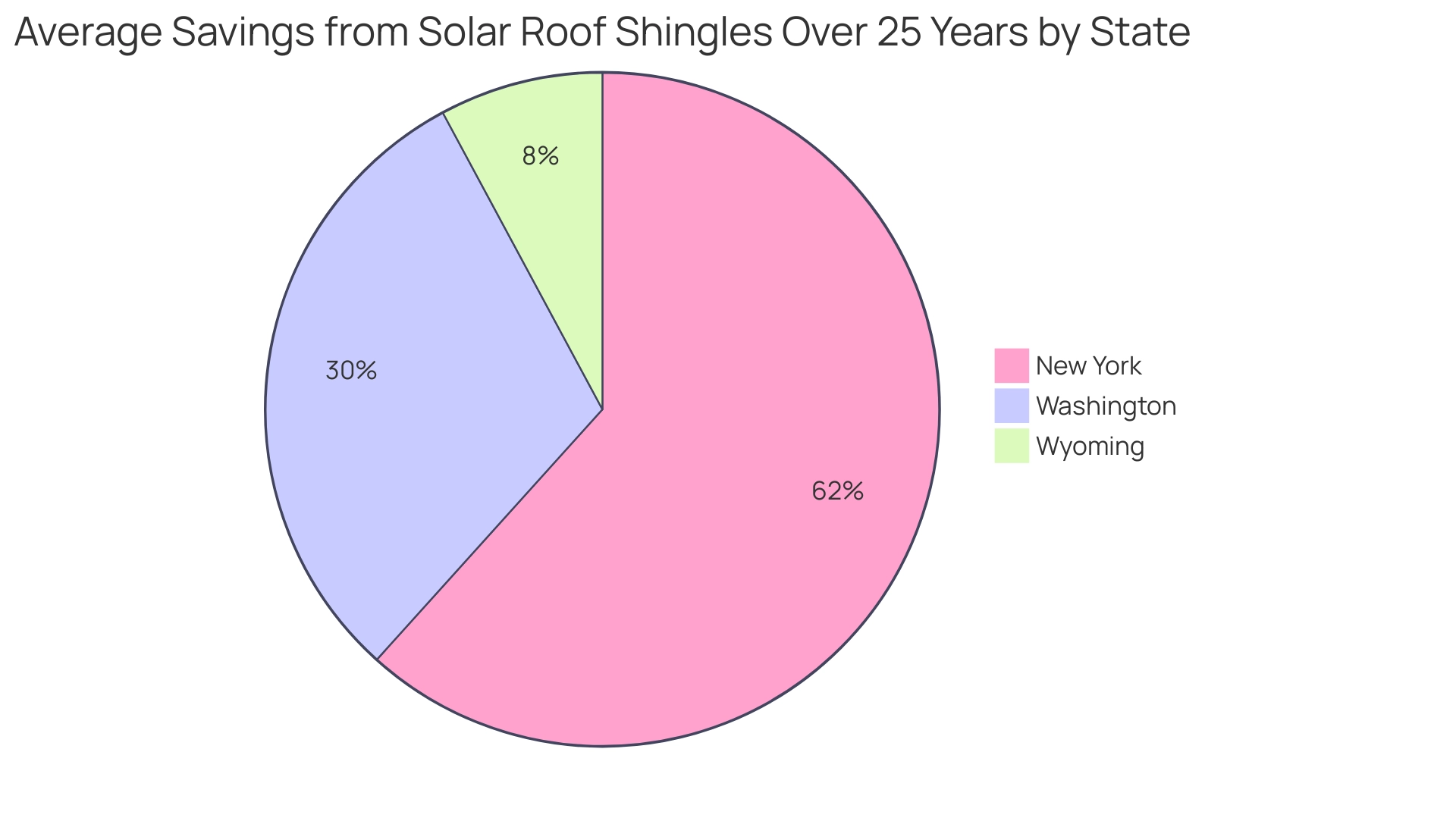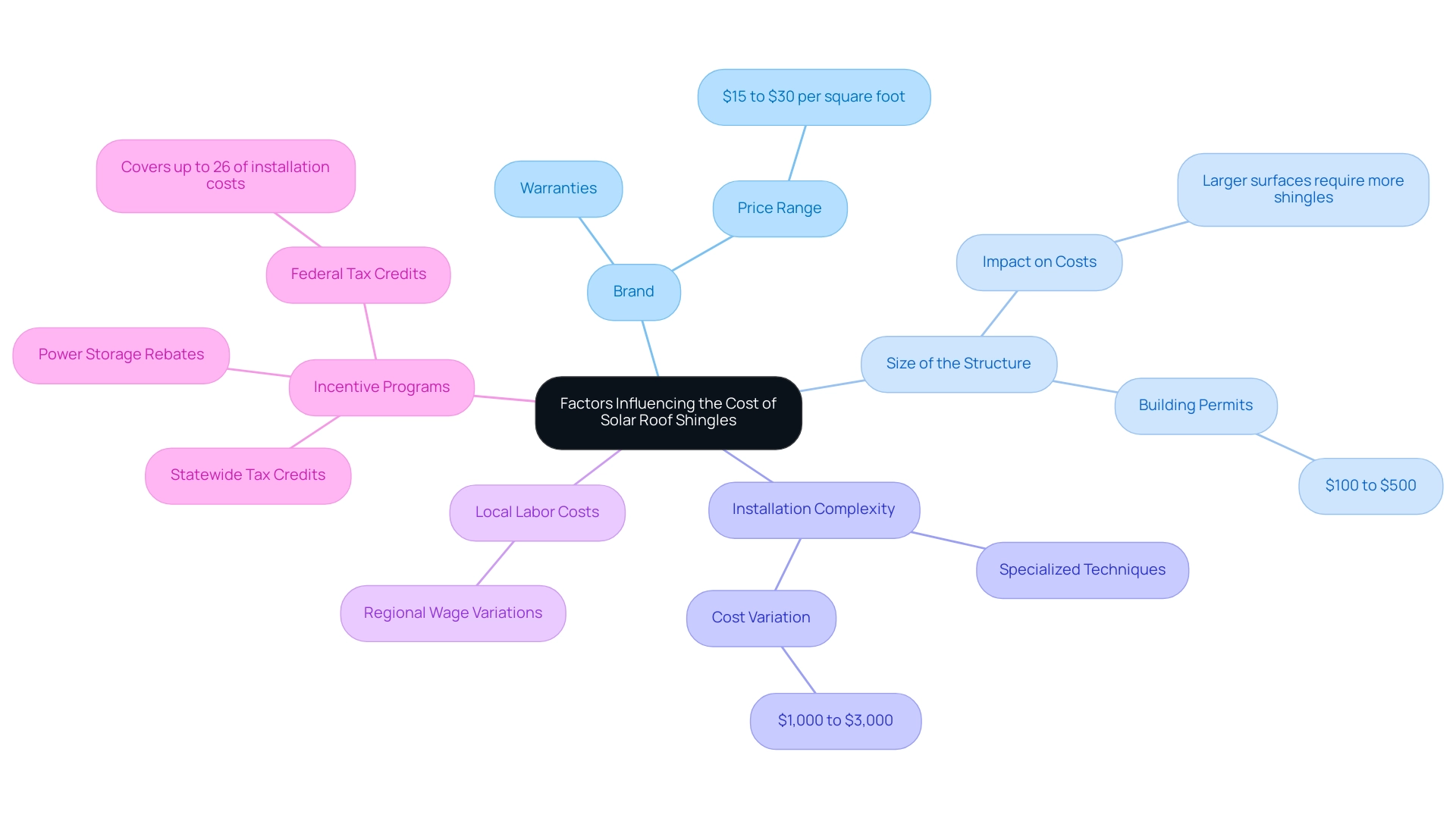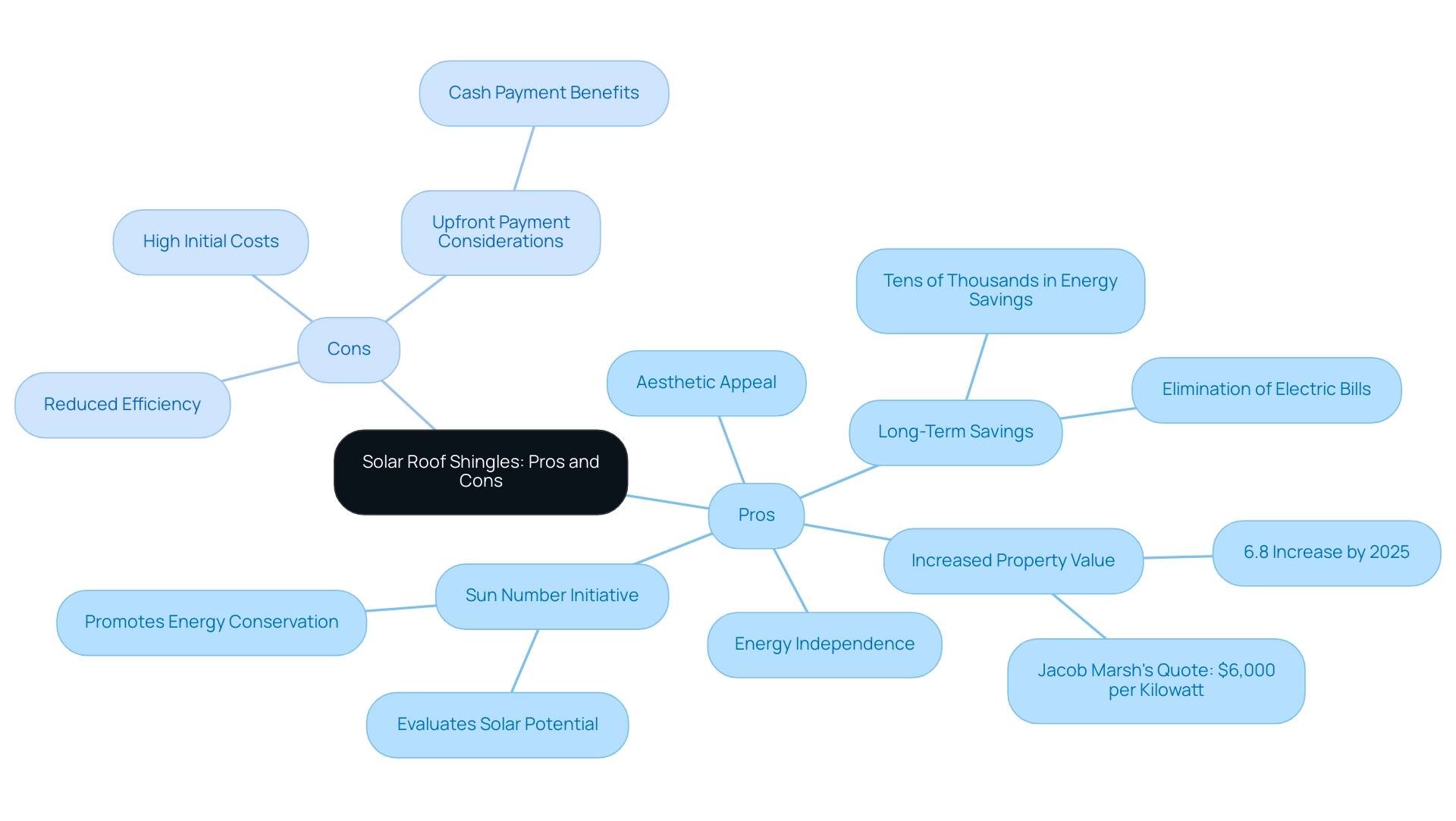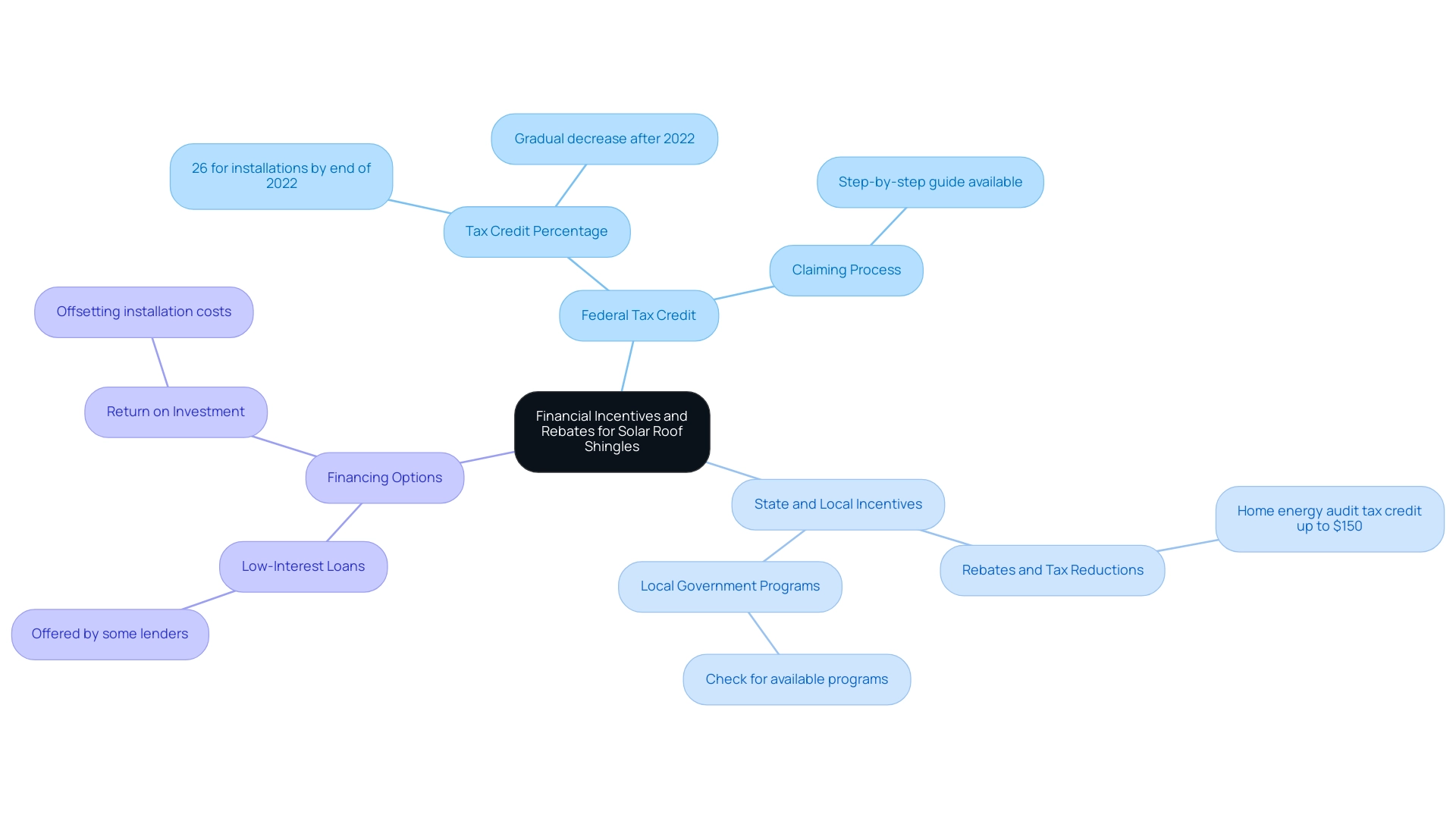Overview
The cost of solar roof shingles typically ranges from $40,000 to $100,000 for installation, influenced by factors such as roof size, brand, and complexity of the installation. The article supports this by detailing the potential savings homeowners can achieve over time, thanks to financial incentives and reduced energy costs, making solar shingles a financially viable and sustainable option.
Introduction
In the quest for sustainable living, homeowners are increasingly turning to innovative solutions that blend functionality with aesthetic appeal. Solar roof shingles have emerged as a game-changer, offering a seamless integration of traditional roofing styles with the power of solar energy. These shingles not only enhance the visual charm of a home but also harness sunlight to generate electricity, paving the way for significant energy savings and a reduced carbon footprint.
As more families embrace this eco-friendly option, understanding the costs, benefits, and potential savings associated with solar roof shingles becomes essential. From installation expenses to financial incentives, this article delves into everything homeowners need to know about making the switch to solar energy, ensuring they can make informed decisions that align with their values and financial goals.
What Are Solar Roof Shingles and How Do They Work?
Roof tiles designed for harnessing sunlight are a cutting-edge roofing choice that seamlessly combines the visual appeal of conventional roofing with the benefits of renewable power. These tiles are designed to imitate conventional roofing materials, offering a seamless appearance while actively producing electricity from sunlight. When sunlight hits these tiles, embedded photovoltaic cells activate, transforming sunlight into usable electricity for your home or even supplying surplus power back into the grid.
This unique blend of functionality not only enhances your home’s visual appeal but also plays a significant role in boosting energy savings and promoting sustainability. As residential photovoltaic systems surged by a remarkable 25% in 2023, more homeowners are recognizing the benefits of panel coverings as a practical and environmentally friendly option for their homes. Jessica Hall, a Customer Experience Sales expert, emphasizes the importance of balancing standardized protocols with personalized interactions in the energy sector, which enhances customer satisfaction.
Furthermore, well-known incentives for renewable resources, such as statewide tax credits and storage rebates, offer financial advantages that make photovoltaic panel systems an even more appealing choice for eco-conscious homeowners. Case studies show that installations of roof shingles not only enhance efficiency but also lead to long-term savings, with some homeowners experiencing reductions in the cost of solar roof shingles and utility costs of up to 70%. This reflects the broader economic benefits of heating technologies, including job creation and reduced greenhouse gas emissions, underscoring their significance in promoting a sustainable future.
Furthermore, initiatives like the Biden-Harris administration’s Solar for All program aim to enhance access to renewable energy, ensuring that the benefits of photovoltaic technologies are equitably shared across communities. By investing in photovoltaic tiles, homeowners not only decrease their reliance on fossil fuels but also shield themselves from the fluctuations of energy prices, making photovoltaic tiles a top option in eco-friendly home design.
Understanding the Costs: Installation, Maintenance, and Savings of Solar Roof Shingles
When evaluating photovoltaic shingles, property owners can anticipate the cost of solar roof shingles installation to range from $40,000 to $100,000. A notable example is the Vivint Solar Roof, with a 12kW installation costing approximately $42,720. The cost of solar roof shingles largely depends on factors such as the size of your roof and the complexity of the installation process.
In Wyoming, homeowners can expect average savings of approximately $5,916 over 25 years from their energy investment. Additionally, in New York, the average cost of a photovoltaic system before incentives is $32,756, and after incentives, it drops to $22,929, leading to average savings of $46,457 over 25 years. Similarly, in Washington, the average cost before incentives is $31,831, with savings of $22,955 over 25 years.
Notably, these roofing materials, while considering the cost of solar roof shingles, are designed to be robust and require minimal maintenance, allowing for a hassle-free experience that lasts for decades. Numerous homeowners appreciate cost reductions varying from 20% to 50% on their electricity expenses, making roof shingles a financially wise option for those aiming to improve their homes sustainably. When compared to traditional electricity costs, the savings associated with the cost of solar roof shingles can significantly offset the initial expense of installation.
Furthermore, it’s worth mentioning that Arizona boasts the lowest average cost of renewable energy, while states like Maine and New Hampshire experience some of the highest prices. Furthermore, homeowners should consider other renewable solutions, such as Tesla home chargers and government programs that can further enhance their savings and sustainability efforts. With these insights into costs and potential benefits, eco-conscious homeowners can make informed decisions about integrating renewable energy solutions into their homes.
Factors Influencing the Cost of Solar Roof Shingles
When considering the cost of solar roof shingles, eco-conscious homeowners should be mindful of several key factors:
- Brand: Different manufacturers provide a range of pricing options and warranties, so it’s essential to compare what each brand offers to find the best fit for your needs. For instance, the cost of solar roof shingles can vary from $15 to $30 per square foot, depending on the brand and quality of roofing materials.
- Size of the Structure: This is a critical factor—larger surfaces will naturally require more shingles, which can increase your overall costs. Additionally, the cost of solar roof shingles should be considered when budgeting for structure replacements, as building permits typically range from $100 to $500.
- Installation Complexity: If your structure has a steep slope or unique architectural features, the installation may require specialized techniques, which can drive up labor costs. The cost of solar roof shingles can vary from $1,000 to $3,000 based on complexity.
- Local Labor Costs: Wages for installation crews can vary significantly depending on your region, impacting the total expense of your project.
- Incentive programs, such as statewide tax credits for renewable customers and power storage rebates, can significantly offset the cost of solar roof shingles, making them a more financially viable option. For instance, federal tax credits can cover up to 26% of the installation costs, which can make a substantial difference in your overall budget.
To optimize power savings, it’s also essential for homeowners to size their shingle systems according to their consumption requirements, as emphasized in the case study titled ‘Sizing Shingle Systems.’ This guarantees that the system fulfills power requirements effectively and can result in greater savings over time.
Comprehending these factors enables you to budget more efficiently for your energy project and make informed choices. As Jacqueline DeMarco aptly states, “This guide will run through roofing licenses by state, so you know exactly what to look for when hiring a roofing contractor.” This information not only aids in managing expenses but guarantees you’re obtaining the best value for your investment in renewable resources, all while taking into account the advantages of government panel initiatives and the effectiveness of renewable solutions.
Pros and Cons of Solar Roof Shingles: Is It Worth the Investment?
When it comes to roof shingles, there are some great benefits to consider alongside a few potential drawbacks. On the plus side, their aesthetic appeal is hard to beat, as they blend seamlessly with traditional roofing materials, making your home look just as charming as ever. Additionally, they encourage independence in power production, providing a sustainable source that aids in decreasing dependence on fossil fuels—something we can all feel positive about.
Homeowners can anticipate witnessing tens of thousands of dollars in energy savings throughout the lifespan of photovoltaic panels, which enhances the financial allure. If you’re considering the long-term value of your investment, homes fitted with renewable energy systems often experience a rise in property value. In fact, studies suggest that by 2025, the average U.S. home equipped with photovoltaic panels could sell for approximately 6.8% more than those without, which is quite an enticing prospect!
Additionally, the Sun Number Initiative by Zillow evaluates the energy potential of homes, encouraging homeowners to consider energy options that can further enhance property values.
On the flip side, there are some considerations to keep in mind. Initially, the greater starting expenses can be an obstruction, as the cost of solar roof shingles usually necessitates a considerable upfront investment compared to conventional roofing options. However, various government programs and incentives are available that can help offset the cost of solar roof shingles, making rooftop tiles a more financially viable option for many homeowners.
Paying for panels upfront in cash provides the most value by eliminating electric bills immediately and avoiding interest on loans. Furthermore, there’s the potential for reduced efficiency; depending on how they’re installed and oriented, photovoltaic tiles might produce less energy than traditional panels. Balancing these pros and cons is essential for homeowners weighing their options.
As Jacob Marsh observed, a photovoltaic installation can enhance a home’s resale value by approximately 4%, or up to $6,000 for each kilowatt of electricity installed, making it a wise consideration for your home’s future. Testimonials from pleased clients also emphasize the positive experiences and financial advantages gained through energy-efficient tiles, adding further credibility to their attraction.
Financial Incentives and Rebates for Solar Roof Shingles
If you’re considering the transition to rooftop shingles powered by the sun, it’s important to be aware of the cost of solar roof shingles, which will delight both your home and the planet! Powercore Electric provides customized solutions aimed at maximizing your savings and safeguarding your family through enhanced roofing and power storage options. A variety of financial incentives and rebates can lighten the load on your wallet.
Here’s a quick rundown of what you might consider:
- Federal Tax Credit: You can claim a significant tax credit of 26% on your installation costs if you take the plunge by the end of 2022, with a gradual decrease following that. This is a fantastic way to make renewable energy more affordable! Additionally, it’s important to follow the step-by-step guide available for claiming this credit to ensure you maximize your benefits.
- State and Local Incentives: Numerous states are very supportive of photovoltaic systems, providing rebates or tax reductions. For example, a home energy audit for your main home may qualify for a tax credit of up to $150, provided it meets certain requirements. It’s well worth your time to check in with your local government to see what programs might be available in your area.
- Financing Options: Some lenders are stepping up to offer low-interest loans specifically for photovoltaic installations. Taking advantage of these financial incentives not only helps offset the cost of solar roof shingles but can also boost your overall return on investment.
As Stephen Irvin from Amicus Solar Cooperative points out, “It’s a mistake to view the energy sector as more aligned with Democrats,” emphasizing the wide appeal and backing for initiatives across the political spectrum.
With the U.S. renewable energy sector expanding by more than 200% over the past two decades, now is a great time to explore how these incentives can benefit you and your home. Plus, by switching to solar energy with Powercore Electric, you can enjoy the benefits of energy independence, financial savings, and sustainability. As you look into your options, remember that these incentives can pave the way for a more sustainable future while keeping your finances in check!
Ready to make the switch? Contact Powercore Electric today for your free, personalized estimate and discover how our tailored solutions can help you maximize your savings and sustainability!
Conclusion
Solar roof shingles represent a remarkable step forward in sustainable living, seamlessly combining the beauty of traditional roofing with the practicality of solar energy. By understanding how these shingles work, their installation costs, and the potential savings they offer, homeowners can make informed decisions that align with their eco-friendly values and financial goals. The integration of solar technology not only enhances a home’s aesthetic appeal but also contributes significantly to energy independence and long-term savings.
While the initial investment may seem daunting, the availability of various financial incentives and rebates can alleviate some of the financial burden, making solar roof shingles a more attainable option for many. By taking advantage of these programs, homeowners can enjoy substantial savings on their energy bills and increase their property value in the process.
Ultimately, solar roof shingles are not just a trend; they represent a commitment to a sustainable future. With the right information and resources, homeowners can confidently embrace this innovative solution, reduce their reliance on fossil fuels, and contribute to a cleaner environment for generations to come. Making the switch to solar energy is not just a personal investment—it’s a step toward a brighter, more sustainable world.


